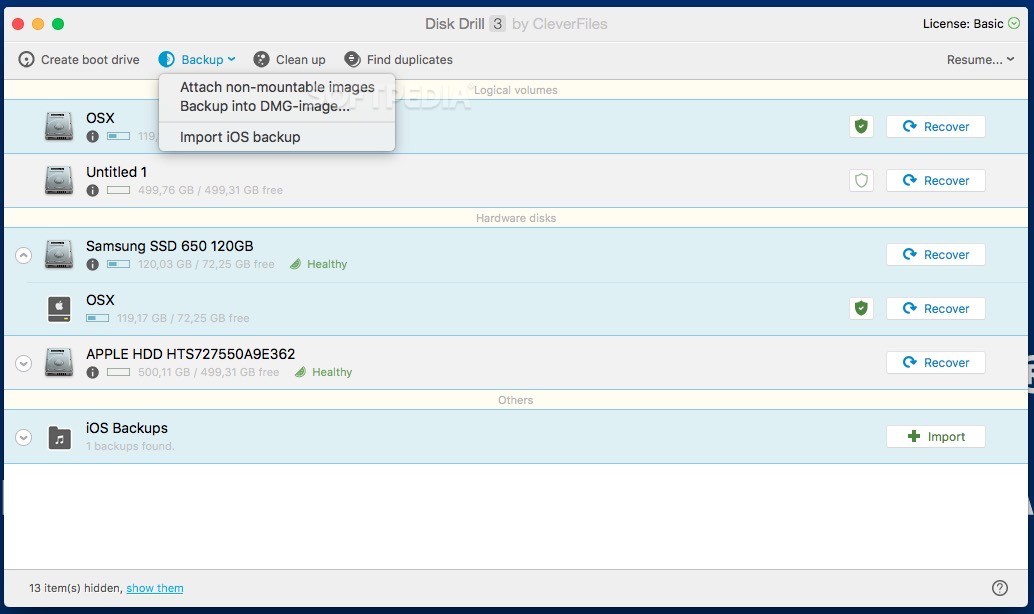

#Diskwarrior 6 update
Most errors happen with booting disks that have many items (for instance, 5 million items taking 1 TB in 2 TB SSD) and are extensively used many hours each day, as well as Time Machine disks that update such disks (mainly when the contain years of backups). My experience is with HFS+ only, since DiskWarrior only works with it. Alsoft has promised it and says that it will rebuild the directory of APFS disks, both in its web site and Twitter’s account. Thus, it would be great to test DiskWarrior 6 in such scenarios when it comes out, of course. And when serious issues arise, you would like an effective tool to fix it in 10 minutes, as nos possible with HFS+ and DiskWarrior 5. APFS is much robust than HFS+, but it is not bullet-proof. Sometimes even related to Boot Camp (Intel x86 Macs), but the fact is that such serious issues arise with APFS disks. Most of the times they are due to mistakes from the users, or issues during installations, upgrades and updates. Time will tell, but searching the Internet with Google or similar shows horror stories of people with serious problems on APFS disks that Disk Utility’s First Aid cannot fix. Yes, I am extrapolating from HFS+ experience.
#Diskwarrior 6 how to
How to know if it is a warning or an error? Are such words used to report them in First Aid? I have not tested ARM-based M1 Macs. If all else fails, you may need to eject the external disk and restart without it.įirst Aid, and Disk Utility in general, appear far more mature and less prone to error, whether run from the Finder or in 1TR. I’m not sure why these should occur, but if checking volumes first doesn’t resolve the problem, boot from the internal disk and try First Aid from there.
#Diskwarrior 6 mac
You may encounter similar errors when trying First Aid on the internal volumes if you’ve booted your M1 Mac from its external disk. If that happens, try First Aid on the volumes first, and if necessary shut down and enter 1TR again. If you have an external bootable disk connected, in particular, you may find that checking the internal disk first results in an error in which Disk Utility reports that it can’t repair a volume because other APFS volumes in its container are mounted. When your Mac has started up in 1 True Recovery (1TR), Disk Utility there should normally be able to run First Aid on the boot disk, provided that you do this in Apple’s recommended order. On M1 Macs, those can sometimes prove more difficult. If that requires 30 or more substantial snapshots to be checked, then you’re in for a long wait.īest practice in the past has been to prefer to check and repair the boot disk either in Recovery Mode, or when started up from an external disk.


This isn’t just because of the need to ‘freeze’ the active disk, but is significantly prolonged because First Aid also checks each snapshot on the disk. You’re warned first that doing so will leave your Mac unresponsive for several minutes at least. macOS 11.2.1 has no such limitations, and will both check and repair the boot disk. Using First Aid on the active system disk has been generally discouraged, and some versions of Disk Utility have been unable to do this at all. That said, Disk Utility doesn’t help the user to do that, as by default it shows only volumes, making it easy to omit containers and disks altogether. Working the other way around, and starting with volumes, is more likely to succeed. Sometimes running that on a disk first results in an error, when some of the disk’s volumes can’t be unmounted. One reason for doing this is that it often works better in First Aid. Apple has now broken with tradition, and recommends that the order is reversed, and works from volumes up to the disk. So you first select the disk, check and repair that, then each container within it, and (if that doesn’t iterate through all their volumes) individual volumes last of all. The traditional order in which disks are checked and repaired goes from top down. There’s one minor issue here, in the order in which you do this. When you have started up normally from your M1 Mac’s internal disk, First Aid is able to check and repair that disk and any external disks which are mounted. This article looks at its use to check and repair internal and external disks for M1 Macs, using its First Aid tool.

Disk Utility (with its command line sibling diskutil) remains the only reliable tool for checking and repairing APFS disks.


 0 kommentar(er)
0 kommentar(er)
